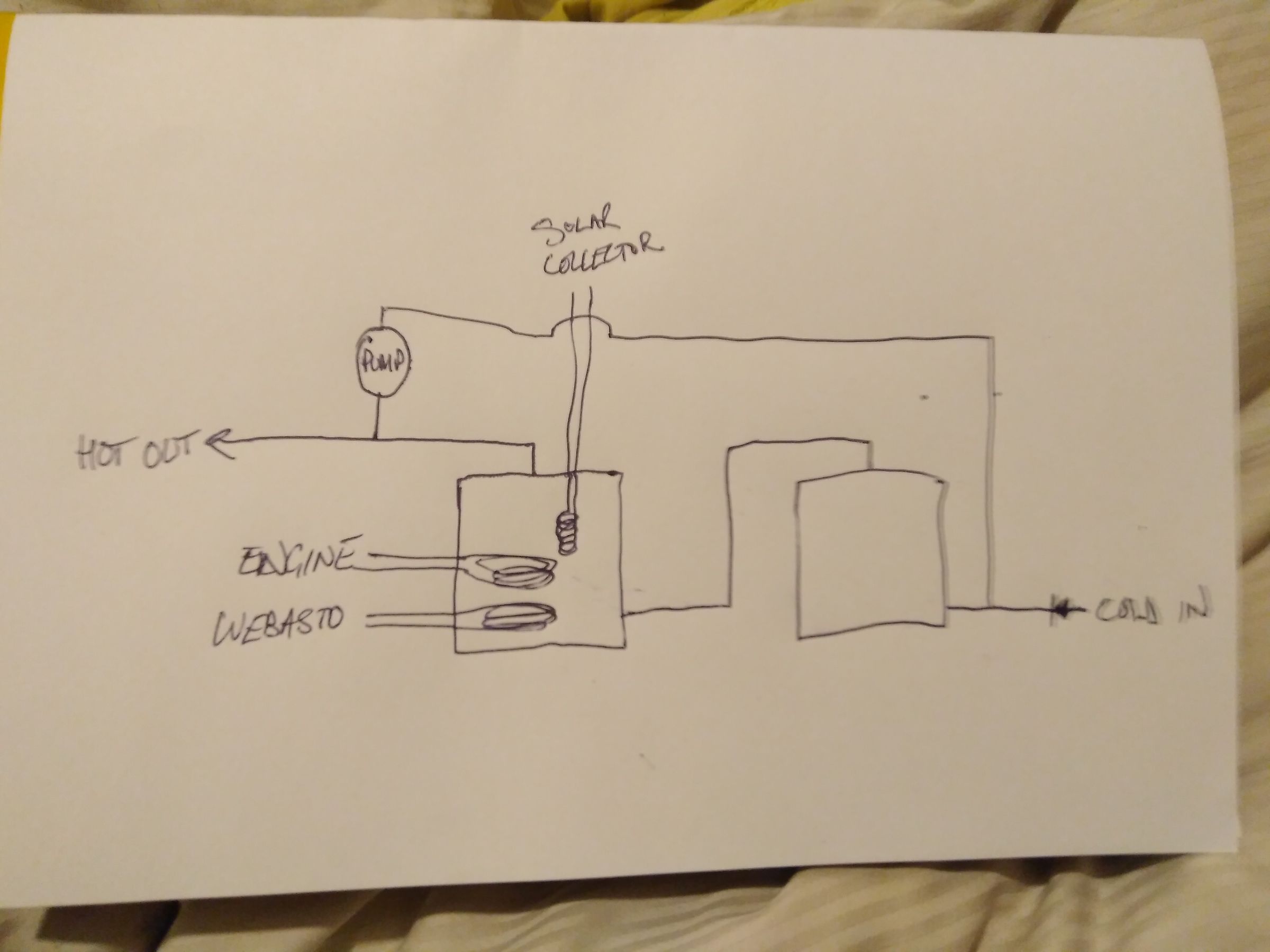Quite a few assumptions here so this might not be relevant:
Assumption 1:
You're going to use the bath occasionally rather than daily.
Assumption 2:
At least one of the calorifiers has two coils and an immersion boss.
Assumption 3:
You're so rarely on shoreline that an immersion won't be missed.
So. I think it would be best to concentrate on heating one calorifier for daily use and only use the second one on bath nights. Swap the immersion for one linked to by Chewbacka above and connect that to your solar collector. If you find yourself on a winter mooring with shoreline, it's not such a big task to swap it back. Use the two coils for engine and Webasto.
When it's bath time, circulate the water around the two calorifiers using a pump with non-return valves to prevent pushing the water back to the main tank (probably not an issue) or sucking air from an open tap (again, probably not an issue). The circulation pump might need to be weaker than the main pump to prevent problems (not sure about that).
Anyway, here's my expertly rendered diagram of how it might look. Not sure if either, both or none of the NRVs (marked as diodes) are actually needed and if they are, clack valves might be better given the relative weakness of boat pumps. As Onewheeler said, an expansion vessel might be needed:
Edit: Needs an NRV in the pumped circuit to prevent the cold water bypassing the calorifiers and flowing through the pump.




